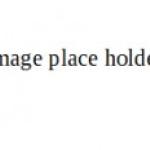Apis vulpina PANZER 1798; Apis subglobosa KIRBY 1802; Anthophora mixta LEPELETIER 1841; Anthophora vara LEPELETIER 1841; Anthophora segusina GRIBODO 1873
Widely distributed in southern England (particularly in the south-east) and the Channel Islands. Not found in Ireland. The majority of records are from private gardens, where the bees are often observed hovering about and visiting the flowers of various labiates, particularly cat-mint (Nepeta cataria) and lavender (Lavandula spp.). Searching gardens within the known distribution of this bee, where one or more of these plants is being cultivated, is a recommended method for recording new sites for this bee. Widely distributed elsewhere in Europe, ranging from southern Finland to Spain, and east to Hungary. Also known from China (Wu 2000).
Not listed in Shirt (1987). Listed as a Notable B species by Falk (1991) (now known as Nationally Scarce (Nb)), though, in view of numerous recent records, this status should be reviewed.
Open sites, especially private gardens containing cultivated Lamiaceae.
Univoltine, early June to mid August.
Small aggregations of nests have been observed in sandy banks and cliffs (Smith 1876), clay and stone walls, and mortar joints of walls. A nest is described and figured by Nielsen (1902), under the synonym A. vulpina.
Profile written:
Proofed: February 2012
Citing this page
Bees, Wasps & Ants Recording Society, 2013. Anthophora quadrimaculata. https://www.bwars.com/index.php?q=bee/apidae/anthophora-quadrimaculata.[Accessed Date (style 1st January 2013)]


